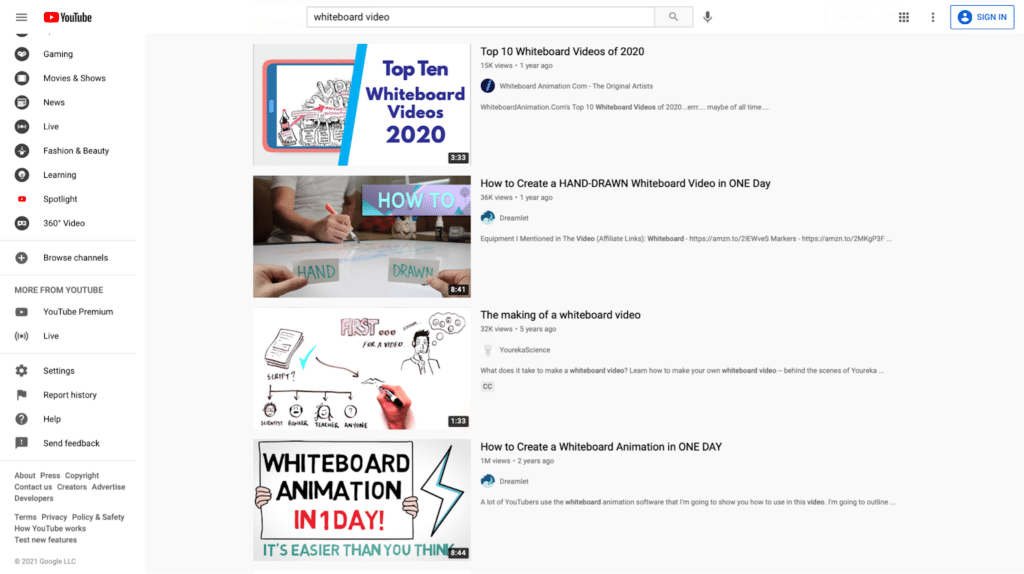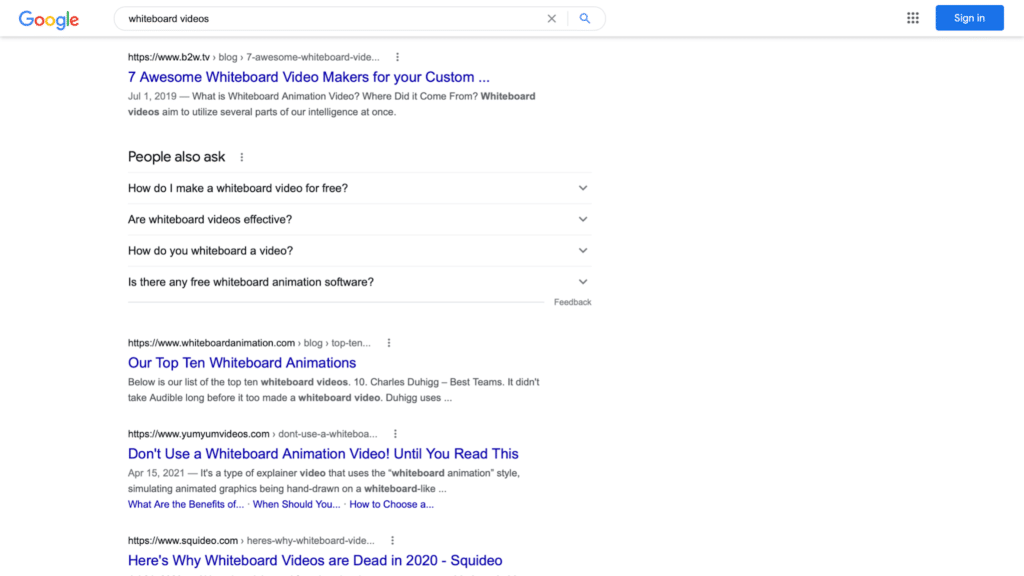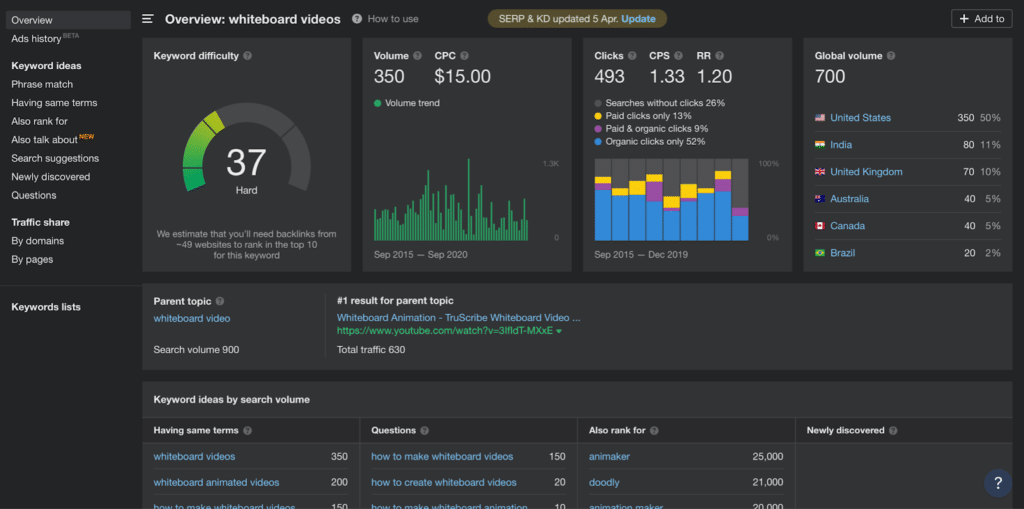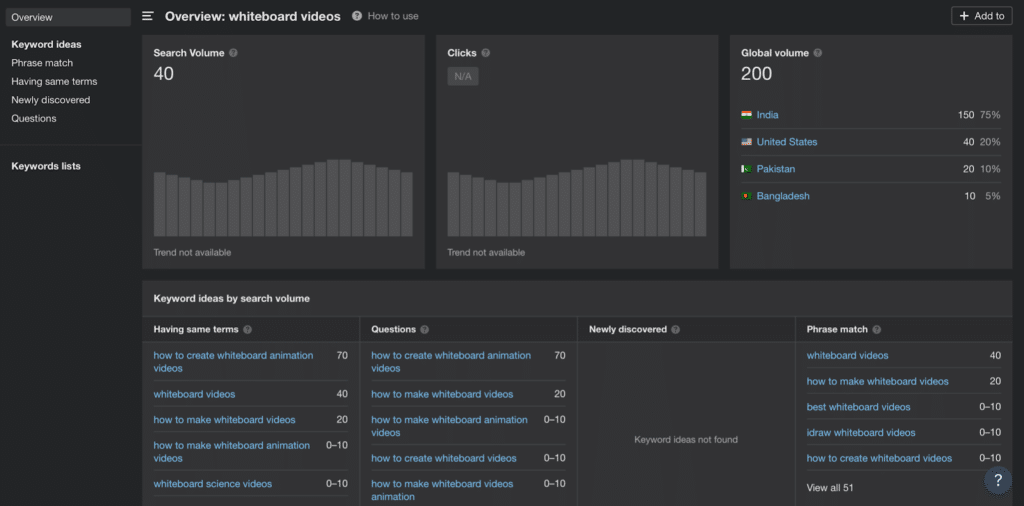YouTube has become the de facto home of content creators and video watchers alike. The site has over 2.3 billion users around the world, and 79% of people who go online say they have a YouTube account.
Even if you aren’t actively uploading videos, you’re at least watching videos. And you’re probably doing it every day, whether you go to YouTube or find embedded video on the websites you visit.
All of that is true about your customers. You can’t always direct them to embedded videos on other sites, but if your videos rank in YouTube’s SEO algorithm, you’ll get your content in front of the people who are searching for the keywords you care about.
So here are three steps to help you grow your business’s audience with YouTube SEO.
YouTube as a search engine
YouTube is the second most popular social network and the second most used search engine with more than 3 billion searches every month. The site is a hub for entertainment, news and also — through YouTubeTV — live events and shows.
But before you decide that YouTube is a shortcut to beating all your quarterly goals overnight, here’s a quick splash of reality: 55% of marketers are already using YouTube to drive brand awareness, social discourse and web traffic.
In other words, all of that content and activity leads to competition.
You know how valuable YouTube traffic could be, and so do other brands in your industry. And since you want your content to rank higher than theirs, you’re going to need to leverage your SEO powers for this new platform. YouTube SEO is a proven way to get more views on your videos, and it’ll also give your company an advantage over competitors.
1. Adjust your keyword research
There’s not exactly a 1:1 correlation between Google SEO and YouTube SEO. It’s a close comparison sometimes, but the two systems are just different enough that you’ll still need new techniques to make sure your videos are visible in search results.
And like every new initiative, that process starts with keyword research.
You most likely have a strategy for choosing keywords to target. Let’s say your team’s current focus is whiteboard videos as a way to educate people on your product. Your team built educational videos for your social channels, new email templates, and a list of LSI keywords to target in upcoming blog posts.
Traditionally, that would be a recipe for success getting more organic traffic. But if you target “whiteboard videos” on YouTube, you’ll get…whiteboard videos.

You won’t see textbook definitions like you’d expect from Google. Instead, the focus is on “how to” content, videos intended to apply an idea rather than just explaining it. People use YouTube to be educated or entertained, and tutorial videos are consistently among the top-ranked videos on any subject.
For comparison, here are the top Google results for the same keyword:

YouTube’s search algorithms function differently than Google’s, which is why results vary so widely between the two platforms. YouTube often prioritizes things like content relevance and how long people watch the video, unlike Google’s focus on backlinks as a measuring stick for where posts should rank.
That means that a video from a new channel could outrank established brands and creators. (You’ll notice the results in that first screenshot didn’t have a lot of traffic.)
While this could be advantageous for your new focus on YouTube SEO, it does mean you’ll need to rethink your keyword targets as you move between these two search engines. And by making those adjustments, you’ll be able to target current and new customers on a platform where most internet-users spend time each day.
2. Rethink your SEO tools
Anyone who has worked on small teams and businesses knows the importance of finding new uses for old tools. Sometimes, budget constraints means you’ve got to get as much as you can out of a resource because you might not have the budget to invest in something new — that’s why web apps with a white label option have become so popular for digital marketers.
So rather than going out and signing up for 5 different YouTube SEO web apps, make the most of what you’re already using. Most SEO tools let you choose the search engine you want to target, and the best ones have a YouTube-focused option.
Here is what Ahrefs shows when you look up “whiteboard videos” on Google search:

Compare that to the activity on YouTube. You’ll see a lot less search volume (because “whiteboard videos” is a somewhat technical search) which indicates that while this is a solid term on Google, you’ll want to take a different approach for any YouTube SEO efforts.

As experts get a better understanding of YouTube’s always-changing SEO algorithm, you’ll discover additional resources and advice on how to rank for the keywords that matter to you.
But as a starting point, take advantage of the tools you already have — chances are that you’ll be able to start exploring terms for YouTube and building a new SEO strategy for that channel. And by doing that, you’ll save your budget for growing the business instead of spending it on new tools you might not need.
3. Find ways to boost engagement
Businesses love YouTube because it provides a perfect, concise feedback loop. And that gives you access to data so you can gain all those insights without needing to outsource the collection process.
For example, you can post a video about your newest product and ask viewers to comment which feature they want to use first. Then, you can study the viewer analytics and engage with comments or replies, either answering questions or engaging your target audience.
This has a lot of benefits in terms of managing how customers and leads feel about your business. (As a rule, people love brands that engage with them and seem “in touch” with the community around their industry.) But viewer engagement also affects YouTube SEO rankings.
At face value, that may not make a lot of sense. Your recent upload about making whiteboard videos hits all the right notes, from keyword variations to adding CTAs in the video description. Shouldn’t that be all you need to compete for a ranking on that keyword?
Not quite. YouTube lives somewhere between a social media platform and a search engine. One social-driven aspect is placing value in how people react to videos they watch. After all, viewers searching for a keyword are probably the best judges on whether or not a particular result answers their question or entertains them.
As a result, likes and comments can actually improve video rankings. Number of subscribers doesn’t have as big an impact, but the YouTube SEO algorithm will notice engagement trends and give a little more weight to videos from consistently high-ranking channels.
For what it’s worth, these engagement numbers don’t supersede traditional factors like keyword accuracy. But because they play a role, they are important in helping you grow your business through your YouTube SEO strategy.
Turning YouTube SEO into business growth
At the end of the day, it’s not enough to create videos, embed them on your website and share them on social media. That used to be enough to attract views and build an audience, but as YouTube has developed its own SEO algorithms, the rules of the game have changed.
And if you’re interested in turning a strong SEO strategy into healthy (and recurring) business growth, your only choice is to learn those rules and master them in the same way you’ve figured out how to use other search engines. SEO gives you a clear image of what next steps your business should take. So take that mindset and apply it to your video marketing strategy and watch the growth begin.

Drew Gula
Drew Gula is the copywriter at Soundstripe, a company that helps businesses and creators with royalty free music by providing resources like royalty free rock music .



